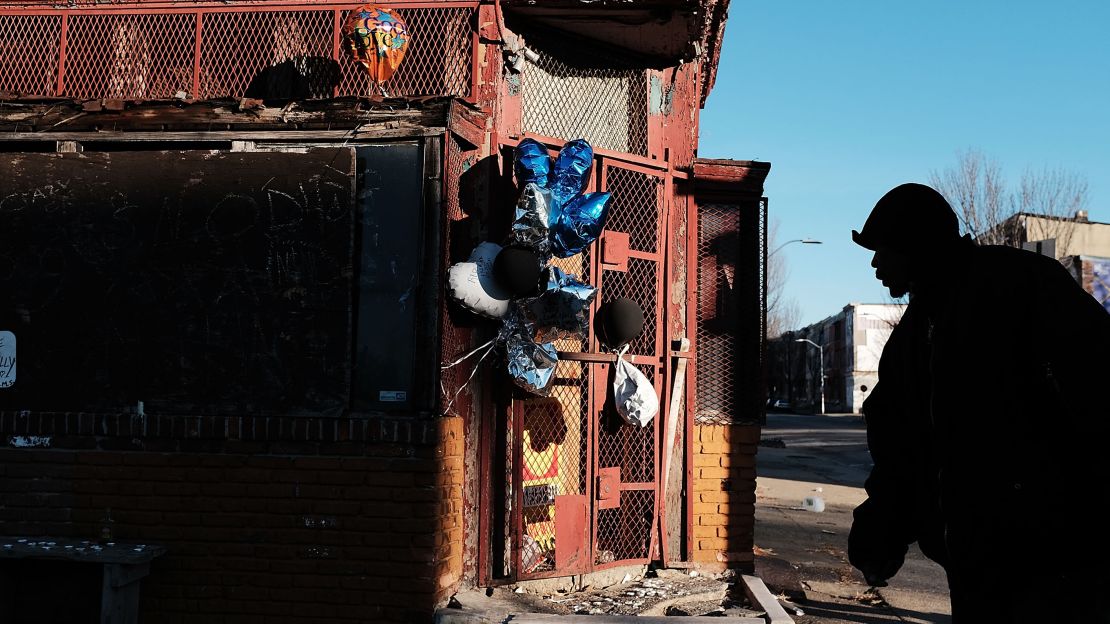Baltimore, a city with one of the highest per capita homicide rates in the country, has not seen a homicide for 11 days and counting – the longest homicide-free period since March 2014.
The number of homicides in Baltimore, nicknamed “Charm City,” began rising in 2015. Baltimore had 51.4 homicides per 100,000 residents in 2016, according to the FBI. In comparison, Chicago had 28.07 homicides per 100,000 residents, and New York City had 3.9 per 100,000 residents.
The city of some 620,000 residents saw 343 homicides in 2017, according to Baltimore police, a new record of homicides per capita in the city and the highest number of homicides since 1993, when 353 people were killed. Because the city’s population has shrunk since the previous high, the rate of homicides per person rose.

This year is off to a better start. January 2017 saw 32 homicides, according to the Baltimore PD. There were 26 homicides in January 2018.
The 11-day period of calm began with a ceasefire called by a community group on the first weekend of February. The group, called Baltimore Ceasefire, is leading a grassroots effort to reduce violence on the streets one weekend at a time.
Ceasefires are called by canvassing neighborhoods with posters, handing out flyers, and speaking with people in the neighborhood – including rival gangs – via social media.
The group called its first ceasefire weekend in August 2017 – but during that weekend, two people were still killed. One person was killed during the second ceasefire in November. Community activist Erricka Bridgeford, one of the forces behind the ceasefire effort, says those past efforts should still be applauded.
“With each ceasefire, even when people got killed, we saw success. The weekend before the August ceasefire there were six homicides – even though someone was killed during that ceasefire, it took 41 hours for someone to be killed,” Bridgeford said. “That’s 41 hours without people being killed! That’s a great thing.”
She said she was proud of her fellow Baltimoreans. “We’re excited right now, but we’re not going to relax because there’s still so much work to do,” she said.
Bridgeford says the group plans to hold the event every quarter.
The city last had at least 10 homicide-free days in 2014, between March 15 and 24, according to Captain Jarron Jackson, a Baltimore Police Department spokesman.
“We hope we can duplicate this, and have this carry on and be the norm, not the exception,” the police department’s media chief, TJ Smith, said Tuesday.
Catherine Pugh, the city’s current mayor, has made reducing violence – in part by growing the police force – and expanding economic opportunity top priorities in her administration.
While it’s good that Pugh is taking violence prevention seriously, Bridgeford said, expanding policing alone won’t solve the problem. “You can’t police yourself out of a situation like this, you can’t just lock people up,” she said. “You have to address the root causes.”
Pugh recently replaced the police commissioner, tasking the new chief with carrying out reforms to policing and training practices required under a consent decree reached with the federal government last year.
That decree followed a Department of Justice investigation that found the department had engaged in a pattern of violating people’s civil rights and federal law, including by making unconstitutional stops, searches and arrests, and by discriminating against African-Americans.
Pugh and police leadership hope to make strides in recruiting and training new officers – and to, as Pugh put it in a recent editorial, “write a new narrative” for the city, even as they acknowledge it will take time to repair and improve law enforcement’s relationship with the communities they police.
CORRECTION: This story has been updated to correct when Baltimore last had a streak of 10 days or longer without a homicide.
















